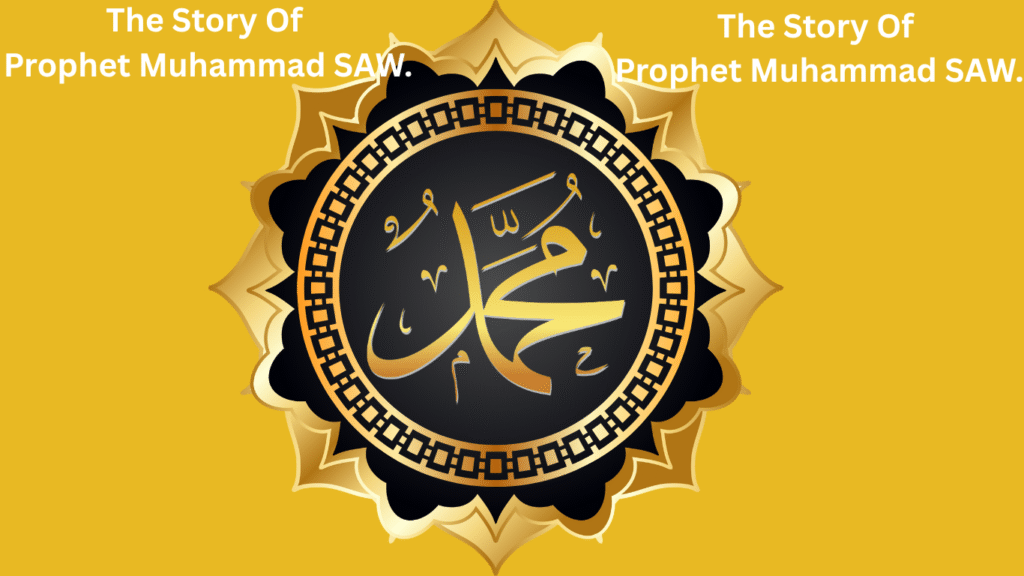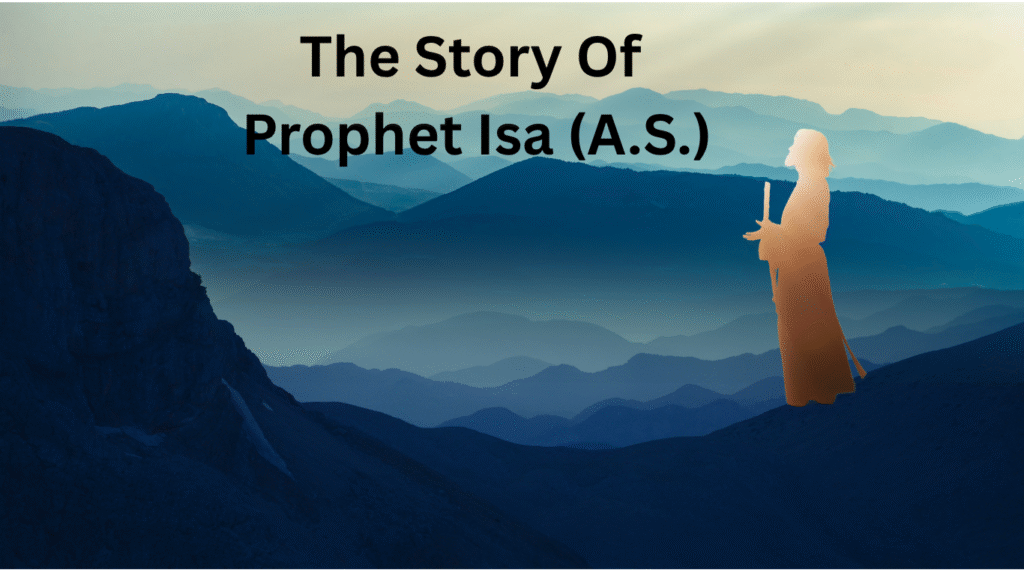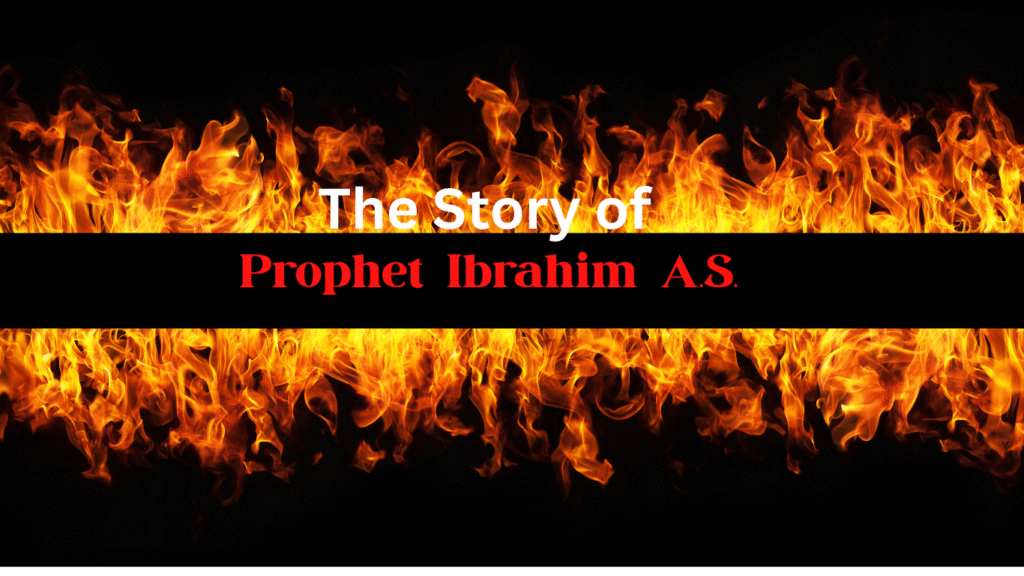The Story of Prophet Muhammad SAW

Introduction
Whenever I reflect on the life of Prophet Muhammad ﷺ, I feel an overwhelming sense of awe and gratitude. His story is not just a historical account it is a divine journey that reshaped the entire world. From his birth in Makkah to his final moments in Madinah, every chapter radiates lessons of patience, mercy, leadership, and unwavering faith.
In this article, I will take you through the complete story of Prophet Muhammad ﷺ, exploring not just the events but also the profound wisdom behind them. I’ve always found his life to be a mirror of Allah’s mercy a perfect example of how to live with purpose, compassion, and truth in every aspect of life.
Birth and Early Life
Prophet Muhammad ﷺ was born in the Year of the Elephant (around 570 CE) in Makkah, into the noble Quraysh tribe. His father, Abdullah ibn Abdul-Muttalib, passed away before his birth, and his mother, Aminah bint Wahb, named him Muhammad, meaning “the praised one.”
Orphaned at a young age, he first came under the care of his grandfather Abdul-Muttalib, and later his uncle Abu Talib. These early experiences instilled in him empathy, humility, and resilience qualities that became the cornerstone of his Prophethood.
Even as a child, people called him Al-Amin (the Trustworthy) and As-Sadiq (the Truthful). His honesty, integrity, and refusal to engage in idol worship set him apart in a society surrounded by moral corruption.
Youth and Character
Before his Prophethood, I am always amazed at how Prophet Muhammad ﷺ led a life of virtue. He worked as a shepherd and later as a merchant, gaining respect for his honesty and fairness. His integrity in trade brought him to the attention of Khadijah (R.A.), a wealthy and noble woman who later became his wife.
Their marriage was a partnership of love, support, and shared purpose. Khadijah (R.A.) became his confidant, supporting him through the initial, challenging years of Prophethood. Together, they had six children, including Fatimah (R.A.), whose lineage continued the blessed family of the Prophet ﷺ.
Even before revelation, he often retreated to the Cave of Hira, reflecting on society’s injustices. Those nights of solitude were the seeds of a mission that would forever change the world.
First Revelation and Early Prophethood
At the age of 40, in the month of Ramadan, Prophet Muhammad ﷺ received the first revelation through Angel Jibreel (Gabriel) in the Cave of Hira. Allah commanded: “Iqra’ (Read/Recite)” (Qur’an 96:1). I always find this moment profound—it marked the transformation of a reflective man into a messenger chosen by Allah to guide humanity.
Initially, he shared the message privately with family and close friends. Khadijah (R.A.) was the first to accept Islam, showing unwavering support. Ali ibn Abi Talib (R.A.), Abu Bakr (R.A.), and Zayd ibn Harithah (R.A.) soon followed.
The early years of Prophethood were marked by immense trials. Quraysh leaders opposed his teachings, threatened him, and pressured his followers. Despite this, his patience and steadfastness never wavered.
Migration to Madinah (Hijrah)
When persecution in Makkah intensified, Prophet Muhammad ﷺ received Allah’s guidance to migrate to Yathrib (later Madinah). I feel inspired by the courage and foresight in this strategic move. The migration not only ensured the safety of the believers but also laid the foundation for an Islamic state.
In Madinah, he united diverse tribes under the Constitution of Madinah, establishing a society based on justice, mutual respect, and religious freedom. Muslims, Jews, and other communities lived with agreed responsibilities and protections, setting a timeless example of governance and coexistence.
Battles and Leadership
Prophet Muhammad ﷺ led several defensive battles, including Badr, Uhud, and Trench (Khandaq). Each battle taught invaluable lessons on strategy, patience, and reliance on Allah. I often reflect on how he combined spiritual guidance with tactical wisdom.
His conduct in war was always ethical: he forbade harming non-combatants, destroyed idols instead of people, and emphasized mercy even toward enemies. These actions demonstrated that Islam is a religion of justice, not blind aggression.
Treaties and Diplomacy
I am particularly impressed by the Treaty of Hudaybiyyah, which initially seemed unfavorable but ultimately allowed Islam to spread peacefully. His diplomacy, foresight, and commitment to truth over short-term gain set him apart as a leader chosen by Allah.
The Conquest of Makkah
After years of opposition and conflict, Prophet Muhammad ﷺ peacefully entered Makkah with an army of believers. He forgave those who had persecuted him and cleansed the Kaaba of idols, reinstating it as a center of monotheism.
This moment, more than any battle, highlights his mercy and the transformative power of forgiveness. I always find it remarkable that a man could lead millions without succumbing to vengeance, embodying Allah’s compassion.
Final Years and Legacy
Prophet Muhammad ﷺ spent his final years in Madinah, guiding the Muslim community, delivering sermons, and teaching. The Farewell Pilgrimage emphasized core principles: equality, justice, and devotion to Allah.
He passed away in 632 CE, leaving a legacy that continues to inspire over a billion followers. His life teaches us resilience, mercy, leadership, and devotion to truth. I always feel that studying his life provides a roadmap for personal, social, and spiritual excellence.
Qur’anic References
Surah Al-Alaq (96:1-5): First Revelation
Surah Al-Muddaththir (74:1-7): Early Mission
Surah Al-Fath (48:1-29): Treaty of Hudaybiyyah
Surah Al-Anfal (8:41-69): Battle Lessons
Conclusion
Reflecting on the life of Prophet Muhammad ﷺ fills me with awe. His journey from orphan to the final Messenger of Allah teaches timeless lessons: patience in trials, compassion for all, unwavering commitment to truth, and reliance on Allah. I feel that every believer can find guidance, inspiration, and hope in his story, making it eternally relevant across generations.
The story of Prophet Muhammad ﷺ is not just history—it is a living example of how to live a life pleasing to Allah, guiding humanity toward justice, mercy, and faith.
Recommended:
FAQs About Prophet Muhammad SAW.
- When was Prophet Muhammad ﷺ born?
He was born in the Year of the Elephant, around 570 CE, in Makkah. - Who were his parents?
His father was Abdullah ibn Abdul-Muttalib, and his mother was Aminah bint Wahb. - Who was the first person to accept Islam?
Khadijah (R.A.), his wife, was the first to accept Islam. - What is the significance of the Cave of Hira?
It is where Prophet Muhammad ﷺ received the first revelation from Angel Jibreel. - Why did he migrate to Madinah?
To escape persecution in Makkah and establish a safe Islamic community. - What was the Constitution of Madinah?
A charter that established governance, rights, and responsibilities among diverse tribes. - Which battles did Prophet Muhammad ﷺ participate in?
Badr, Uhud, and the Battle of the Trench are the most notable. - What was the Treaty of Hudaybiyyah?
A peaceful treaty with Quraysh that allowed Islam to spread and ensured security. - When did Prophet Muhammad ﷺ pass away?
He passed away in 632 CE in Madinah. - What is the central message of his life?
To embody mercy, justice, patience, and unwavering devotion to Allah.

